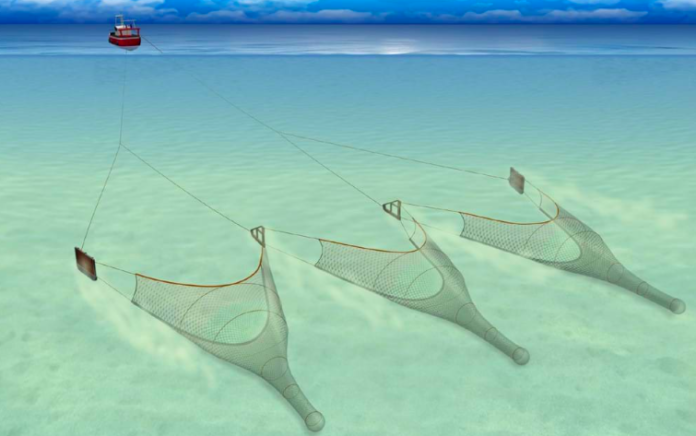Fishing has been part of human culture since before recorded history. Fish provide – and have provided – a major percentage of the food used by civilizations living near water. The ancient Roman Empire, for instance, relied heavily upon salted fish to sustain its population. Ancient Greek scholars wrote long instructional passages laying out the fishing techniques of the day. Nets are essential in most types of commercial fishing. The earliest fishing nets to have been discovered come from Finland and were in use over 8000 years ago. Although the nets themselves are gone, the weights that held them below the surface of the sea remain.
Modern commercial fishing professionals use many kinds of netting. Each net type is suitable for a different kind of fish, environment, and catchweight. In the modern era, fishing has been a contentious issue. Overfishing using large trawling nets has been largely condemned by marine environmentalists and banned in the waters of many nations. New tactics and new nets are being used to help reduce the amount of collateral damage modern fishing nets cause.
This article is a very brief guide to the most common kinds of fishing nets used commercially today.
Purse Seine
Purse seine nets are some of the most common forms of commercial fishing equipment. They are designed to trap and haul up large schools of fish in mid-depth waters. Tuna and mackerel are often caught using these nets. Although they were typically made of hemp in the past, most purse seine nets are constructed using synthetic materials like those sold by Goonvean Fibres. Hemp rose massively in price after its cultivation was outlawed in many countries, which makes synthetic fibers far more economically viable.
Purse seine nets work by surrounding a school of fish with a vertical curtain. The weighted bottom of the net is then closed up, preventing fish from escaping. Purse seine fishing is generally considered to be a relatively efficient process. Because these nets do not touch the sea floor, they cause minimal environmental damage. They also produce very little collateral catch because they are typically aimed at schooling fish.
Cast
Cast nets are the oldest form of fishing net. They consist of a fine woven net with weights tied around the edge. The fisherman or woman throws the net so that the weights fall around a group of fish, trapping them inside the net. Although not useful for large-scale commercial operations, cast netting is still practiced in many countries around the world for sustenance and community catching. Cast netting is illegal in some UK waters due to the amount of fish a single throw can remove from the ecosystem. It is, however, used to catch herring in many places efficiently. San Francisco bay has recently seen a surge in recreational cast net herring fishing – with large numbers of anglers taking to the piers and slipways of the area.
Gillnet
Gillnets are extremely popular with both deep and shallow ocean fishing professionals. These nets are essentially vertical curtains of netting that are strung out in a line, with floats marking the location of the net in the water. When fish swim into the vertical curtain, they become entangled in the net. Fish can become entangled in a gillnet in one of three ways:
Wedging
If a fish becomes wedged, it is stuck in the net behind the head, and along the body so it cannot escape from the net.
Gilling
Most fish caught in these nets are gilled – hence the name. Gilling occurs when a fish passes its head through the netting but then becomes stuck by its gills. Fish are usually gilled very tightly, keeping them in the netting until they are hauled out.
Tangling
Tangled fish get stuck by their teeth, fins, or any other protrusion. They may be able to find their way out before the netting is hauled in.
Gillnets are relatively environmentally friendly because they do not touch the seabed. They are, however, liable to catching unwanted fish: any kind of fish can swim by and become stuck. Dolphins and sharks have a small possibility of being caught as bycatch in these nets.
Push
Push nets are rigid framed cage-type structures that are moved along the seabed to catch flatfish, crabs, and shrimp. They are considered bad for the environment because they drag along the bottom of the sea – destroying areas where fish may hide, damaging plant life, and disturbing the ecosystem on the sea floor.


















